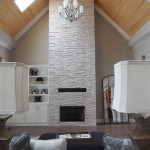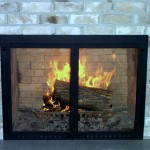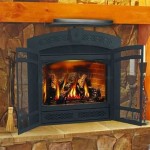Best Firewood for Your Indoor Fireplace: A Comprehensive Guide
Choosing the right firewood is paramount for enjoying a safe, efficient, and pleasurable experience with an indoor fireplace. The type of wood burned significantly impacts the heat output, burn time, smoke production, creosote buildup, and overall air quality within the home. Selecting the appropriate firewood ensures optimal performance and minimizes potential hazards.
Firewood is broadly categorized into hardwoods and softwoods. These classifications are based on the tree's botanical structure and density, not necessarily the wood's physical hardness. Understanding the differences between these types is crucial for informed decision-making.
Hardwoods generally originate from deciduous trees, which lose their leaves annually. Softwoods typically come from coniferous trees, which retain their needles year-round. There are exceptions, but this is a useful rule of thumb. The distinction is important because hardwoods tend to be denser than softwoods, leading to a longer burn time and higher heat output.
Understanding Hardwoods and Their Benefits
Hardwoods are the preferred choice for most indoor fireplaces due to their superior burning characteristics. Their density allows them to burn hotter and longer, producing more heat with less frequent refueling. They also tend to produce less smoke and creosote, contributing to a cleaner and safer burn.
Oak is considered by many to be the gold standard of firewood. It is a dense, slow-burning wood that provides excellent heat. Oak needs to be seasoned properly, usually for at least 12 months, ideally 24 months, to reduce its moisture content. Unseasoned oak can be difficult to ignite and will produce excessive smoke.
Maple is another excellent choice. It burns hot and clean, with a pleasant aroma. Maple seasons relatively quickly, typically requiring 6 to 9 months of drying time. It is a readily available and cost-effective option in many regions.
Ash is known for its ease of splitting and burning. It ignites easily and burns with a steady flame. Ash also produces relatively little smoke. It requires about 6 to 9 months of seasoning. It’s a solid choice for those new to using firewood.
Birch, while a hardwood, is less dense than oak or maple and burns more quickly. It produces a bright flame and a pleasant aroma, but it needs to be replenished more frequently. Birch can be seasoned in about 6 months.
Cherry offers a unique advantage with its distinctive, sweet fragrance. It burns well, though slightly faster than denser hardwoods. Cherry requires approximately 6 to 9 months of seasoning.
Beech is a dense hardwood similar to oak, providing excellent heat and a long burn time. It requires a seasoning period of at least 12 months. It's less commonly available than oak or maple but represents a worthwhile choice when accessible.
Softwoods and Their Limitations
While softwoods can be used in indoor fireplaces, they are generally not recommended as the primary fuel source. Their lower density results in a faster burn time and lower heat output. More significantly, they tend to produce more smoke and creosote, which can increase the risk of chimney fires.
Pine is a common softwood that is readily available. It ignites easily and burns quickly, making it suitable for starting fires. However, it produces a significant amount of smoke and creosote, making it unsuitable for prolonged burning in an indoor fireplace.
Fir is another softwood that is often used for construction. It burns hotter than pine, but it still produces more smoke and creosote than hardwoods. It is also prone to throwing sparks, which can be a safety hazard in an indoor setting.
Spruce is similar to fir in its burning characteristics. It is often used for paper production and can be used as firewood, but it is not ideal for indoor fireplaces due to its high smoke and creosote production.
Cedar possesses a distinctive aroma and is often used in closets and chests. It burns quickly and produces a considerable amount of smoke. It is not recommended for indoor fireplaces.
Larch is a softwood that is somewhat denser than other softwoods, and it burns with more heat and less smoke that pine. Still, it falls short of optimal hardwood options if available.
The Importance of Seasoning Firewood
Seasoning is the process of drying firewood to reduce its moisture content. Freshly cut ("green") wood can contain up to 50% moisture, which makes it difficult to ignite, causes it to smolder and produce excessive smoke, and significantly reduces its heat output. Properly seasoned firewood should have a moisture content of 20% or less.
Seasoning involves splitting the wood, stacking it in a single row off the ground (allowing air to circulate), and covering the top (while leaving the sides open to the air). The length of time required for seasoning depends on the type of wood, the climate, and the method of stacking. Hardwoods generally require longer seasoning periods than softwoods.
Signs of well-seasoned firewood include:
- Cracked or split ends
- Grayish or weathered appearance
- Lighter weight than green wood
- A hollow sound when two pieces are struck together
Using a moisture meter is the most accurate way to determine if firewood is properly seasoned. These devices measure the moisture content of the wood and provide a clear indication of its readiness for burning. Aim for a reading of 20% or less.
Burning unseasoned firewood not only reduces heat output and increases smoke production but also significantly increases the risk of creosote buildup in the chimney. Creosote is a highly flammable substance that can lead to dangerous chimney fires.
Properly seasoned firewood burns more efficiently, produces less smoke, and minimizes the risk of creosote buildup. This contributes to a safer and more enjoyable fireplace experience.
In summary, choosing the best firewood for an indoor fireplace involves carefully considering the type of wood, ensuring it is properly seasoned, and prioritizing safety above all else. By following these guidelines, individuals can enjoy the warmth and ambiance of a fire while minimizing potential risks.

The Best And Worst Types Of Wood For Burning In Fireplace Bob Vila

What Is The Best Wood For Fireplace Comfort All Winter Long

Best And Worst Woods For Fireplaces

How To Choose Wood For Your Fireplace Regency

10 Of The Best Indoor Firewood Storage Ideas Maria Louise Design

What Is The Best Wood For Fireplace Comfort All Winter Long

A Guide To Choosing The Best Indoor Fireplace Increase Comfort

A Ling Fire Indoor Firewood Storage Ideas Home Tree Atlas Wood Burning Stoves Living Room Freestanding Fireplace Stove Hearth

Storing Firewood The Right Way Manna Gum Building And Garden Supplies

Best Firewood For A Fireplace Top Choices
Related Posts








